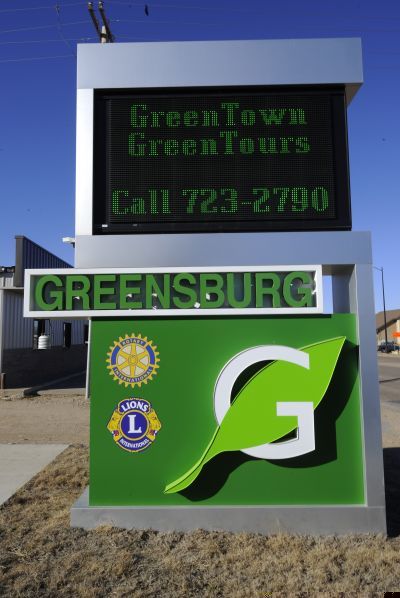Destroyed US town a model of eco-living as it rebuilds

Your support helps us to tell the story
From reproductive rights to climate change to Big Tech, The Independent is on the ground when the story is developing. Whether it's investigating the financials of Elon Musk's pro-Trump PAC or producing our latest documentary, 'The A Word', which shines a light on the American women fighting for reproductive rights, we know how important it is to parse out the facts from the messaging.
At such a critical moment in US history, we need reporters on the ground. Your donation allows us to keep sending journalists to speak to both sides of the story.
The Independent is trusted by Americans across the entire political spectrum. And unlike many other quality news outlets, we choose not to lock Americans out of our reporting and analysis with paywalls. We believe quality journalism should be available to everyone, paid for by those who can afford it.
Your support makes all the difference.With all eyes on US efforts to combat climate change at next week's UN summit in Copenhagen, one Kansas town is going green in a big way -- and setting an example for American communities.
With all eyes on US efforts to combat climate change at next week's UN summit in Copenhagen, one Kansas town is going green in a big way - and setting an example for American communities.
On the evening of May 4, 2007, a category-five tornado swept through the rural midwestern town of Greensburg, killing nine people and obliterating 95 percent of the urban landscape, including the school, the hospital and more than 900 houses.
But this community of 1,400 is rebuilding stronger than ever, in a remarkable comeback billed by Greensburg GreenTown - a grassroots organization involving town residents, local officials and business owners - as a "model for sustainable building and green living."
In the wake of disaster, local leaders vowed to rebuild their town as the first in the United States to have all municipal projects constructed to the highest environmental and efficiency design standards.
The efforts have attracted green experts and enthusiasts from around the world because of the Greensburg's environmentally sustainable principles through renewable energy.
Whereas previously the town's only pull was having the world's largest hand-dug well, it now hopes to put itself on the map for eco-living.
A water conservation system turns rain into drinking water, wind turbines on the edge of town provide eco-friendly energy throughout the community, and the street lamps light up roads with LED lights.
Even the larger building projects are aiming for an almost 100-percent green record. Greensburg's eco-friendly, under-construction hospital, for example, has a heating and cooling system based on geothermal energy.
In May 2008, then-president George W. Bush saluted Greensburg with a glowing review of the town's efforts, saying he wanted to celebrate the community's "journey from tragedy to triumph."
Bush spoke to students graduating from the high school here, saying the town "is back and its best days are ahead," and pledging to continue federal aid for the community.
The December 7-18 UN summit in Denmark's capital Copenhagen will be a landmark move for US environmental efforts, with President Barack Obama scheduled to attend amid growing calls for a comprehensive, international treaty to confront the climate crisis.
Washington announced last month that, relative to a 2005 benchmark, it would reduce carbon emissions by 17 percent by 2020, 30 percent by 2025, 42 percent by 2030 and ultimately 83 percent by 2050.
The US numbers have been criticized, however, as falling well below the contribution needed.
According to the UN Intergovernmental Panel on Climate Change (IPCC), to reach a two-degree Celsius (3.6 Fahrenheit) warming target, a cut of 25 to 40 percent is needed by industrialized countries by 2020 compared to the 1990 benchmark.
The US target for 2020 would be the equivalent of only a four-percent cut against this benchmark, the IPCC says.
Join our commenting forum
Join thought-provoking conversations, follow other Independent readers and see their replies
Comments